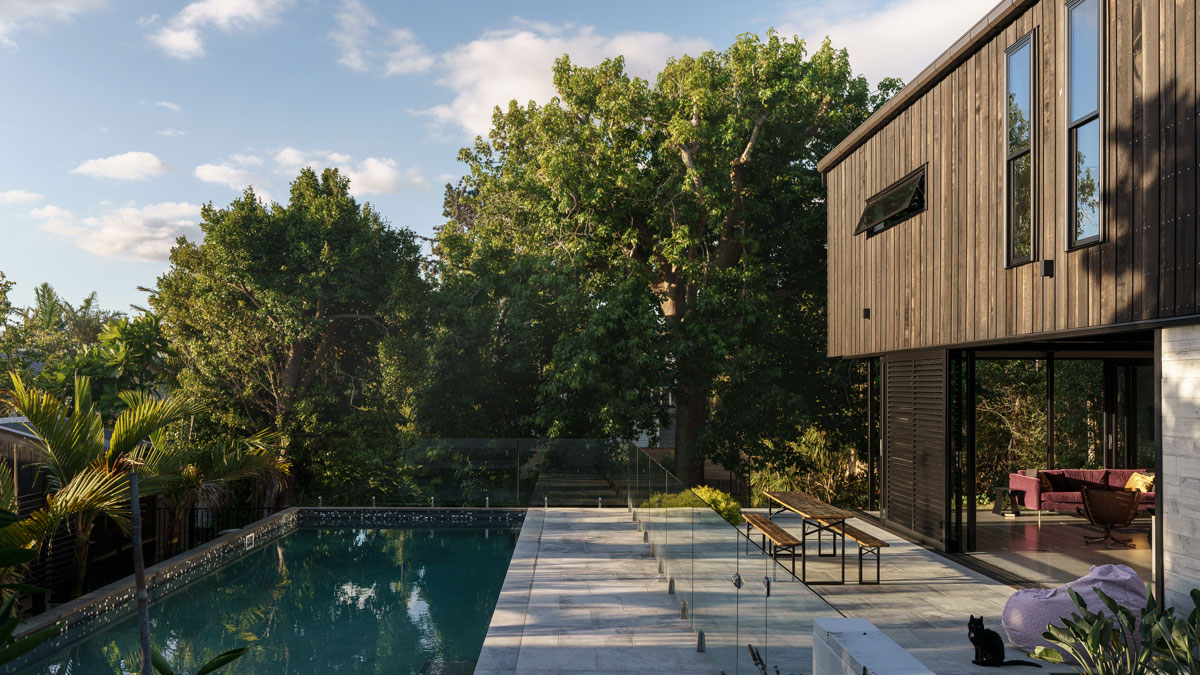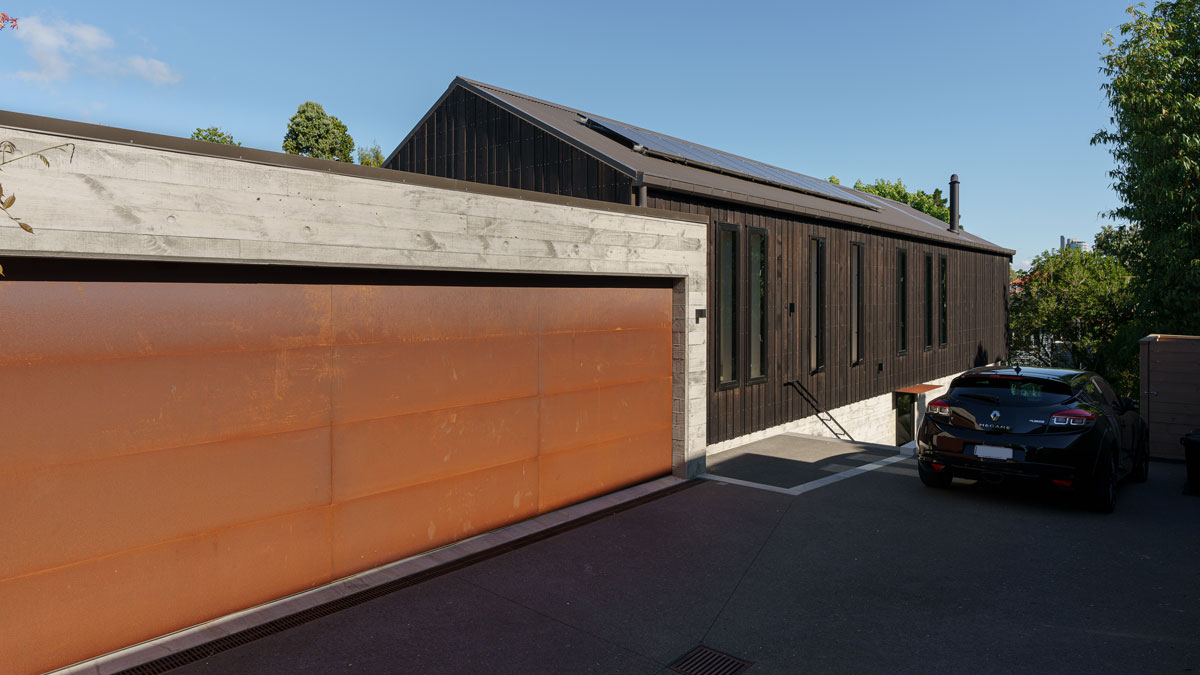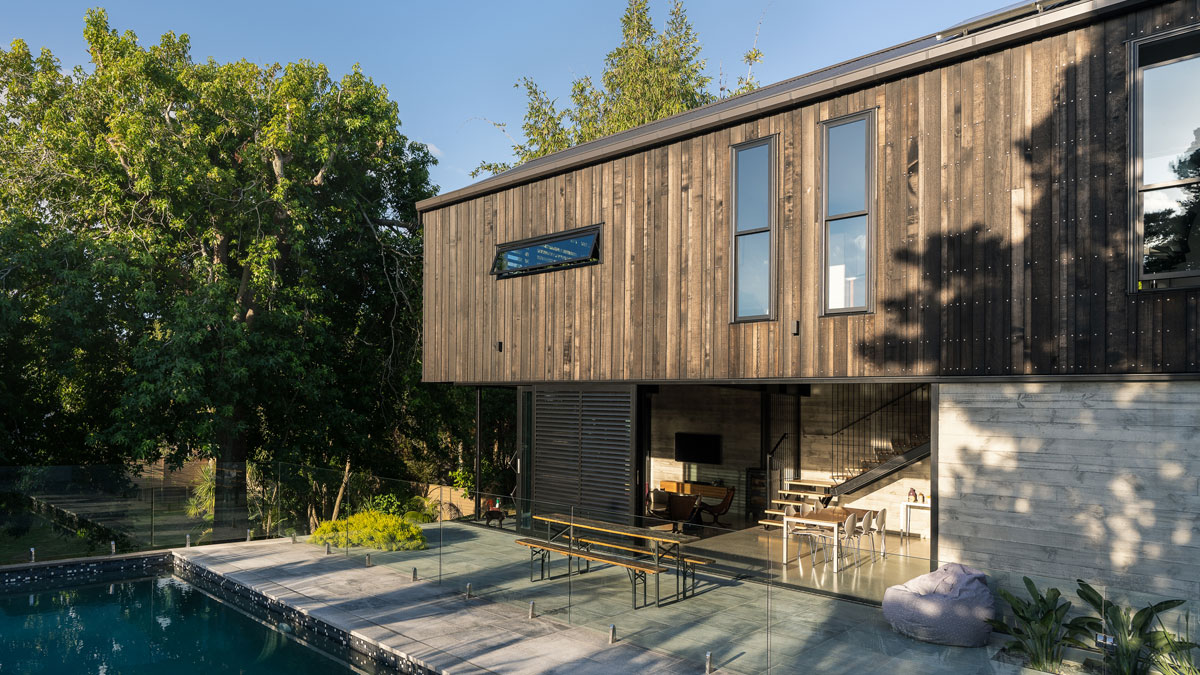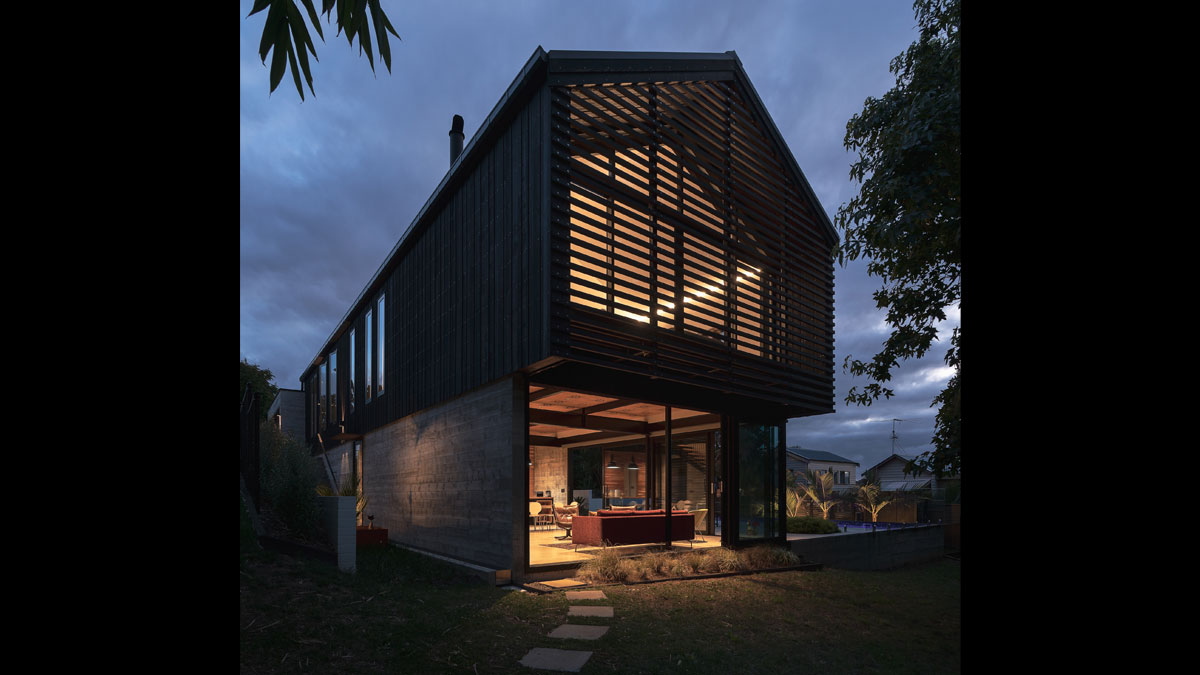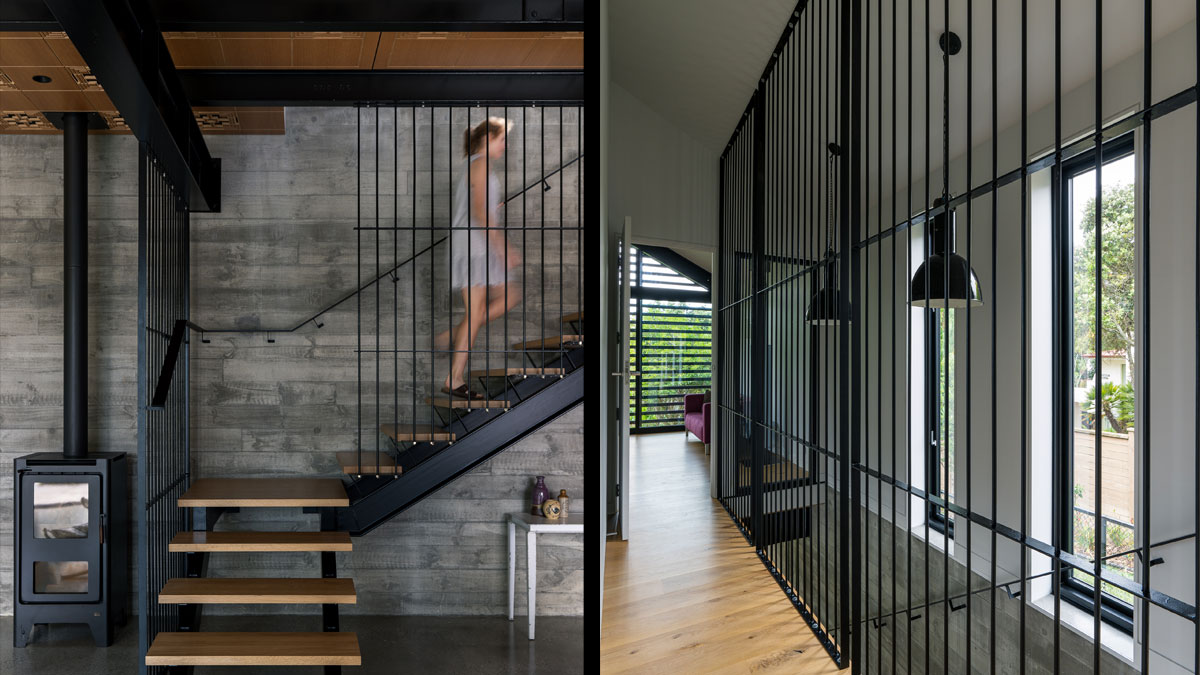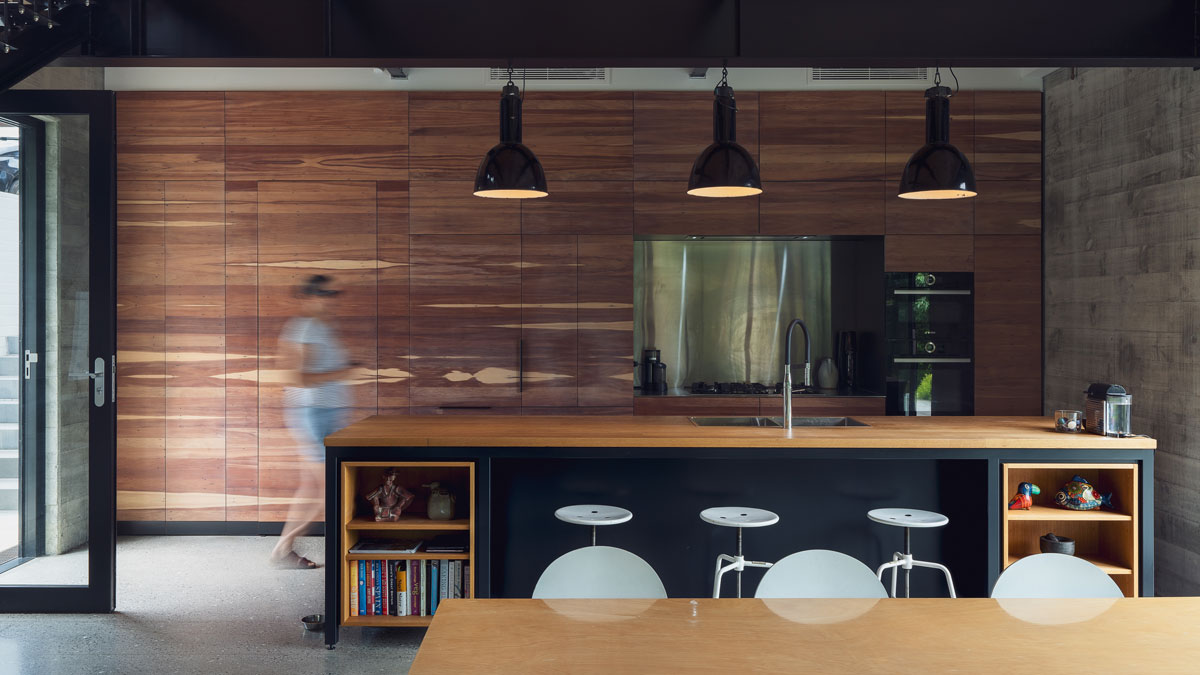Vermont Villa
The house is situated on a rear site on a street in Ponsonby, traditionally the street was made up of small villas which front the street and rear sites which were used for commercial purposes. The neighbouring site was originally an auto repair shop and another was an engineering company. These larger sections also meant that the street has a Catholic church and community centre, a sisterhood residence, and more recently a mosque.
The site was first built on in the 1950’s and it was that house the clients purchased in 2003.
The historic nature of these rear sites meant the buildings would have commonly been tin sheds. The generic architectural form of the building with a pitched roof, vertical cladding, concrete base, and steel details therefore fit with this aesthetic.
An industrial aesthetic was highly influential in the choice of materials limiting the palette to concrete, steel, and timber. The client is very interested in all materials being left exposed and in as natural a state as possible. The steel frame is constructed within the external walls, it has been left as a separate element with all its fixings accentuated, and is painted black. The lower floor walls are board-impressed poured in-situ concrete these are sealed but otherwise the rough finish is left exposed both inside and out to allow the client to appreciate its tactile nature. The lower level has polished concrete floors with a water-based clear finish and the ceiling is covered with bespoke routered plywood panels to aid acoustics.
The upper floor is timber framed with timber trusses used above the sleeping areas, and the sarked ceiling in the upstairs living area being supported by an exposed steel portal frame.
The exterior cladding is random width and depth vertical Canadian Cedar. American White Oak Timber floors feature in the upper floors and are matched to the solid timber treads on the stairs.
The building is designed to be naturally ventilated with the whole of the main floor able to be opened to the outside. A sliding screen allows specific shade where needed and is designed to be locked in position so that the inner pane can be left open through the heat of the day while the clients are at work. This is complemented by the ‘cage’ area off the upper living area which can also be left open all day long as the horizontal battens assure it is secure.
The concrete construction of the lower floor creates the thermal mass that coupled with its north-western orientation gives us the performance we were looking for.
The property has a number of trees that have had to be removed over the years and this firewood is being utilized as a source of heating in the winter. The new fireplace that was installed is an ultra-low emissions model.
The natural ventilation, thermal mass, low emission fireplace, and high levels of insulation have meant that though the house has heat pumps these have been rarely used by the clients since they have moved in.
Winner Highly Commended TIDA New Zealand Home Awards 2022.
Photography by Barry Tobin Photographer
- Date
- Tags Residential




